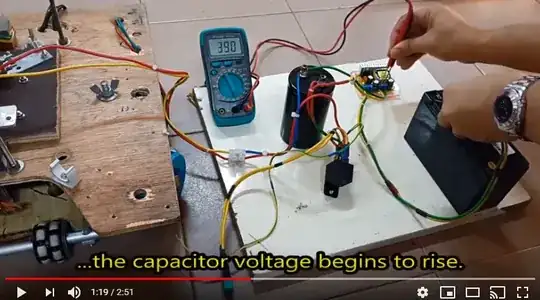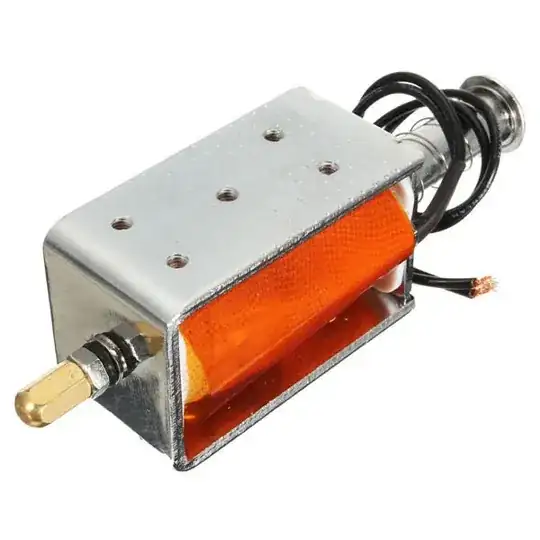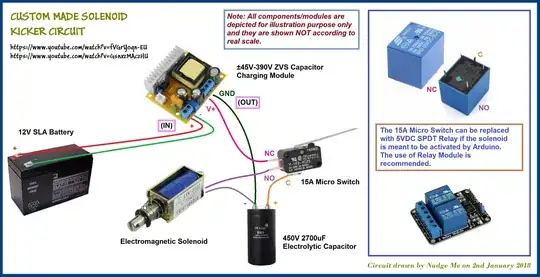The solenoid you linked is a 12V device that draws 8A.
The "kicker" devices shown in the videos are using a boost converter to achieve up to 390 volts, which is applied to the capacitor to charge it.

(Video frame shows 390 volts being measured at boost converter output)
The snap action switch then connects the capacitor to the solenoid, which effectively overdrives the solenoid to produce the strong "kick" that is demonstrated.
First, an extremely important point. You should NOT be working with high voltages unless you know what you are doing. High voltage capacitors can be lethal. You have been warned.
If you are converting the input voltage to anything that exceeds the capacitor's rating (63V), it will fail and likely explode. Generally you should select a capacitor with a voltage rating that exceeds the intended voltage by a safety margin (10% or more). If you are going to use 390V as shown in the video, then you absolutely must use a capacitor that is rated at least that high. The one used in the video is rated for 450V.
Short answer: NO. The capacitor you're asking about will NOT work.
Going a bit further, assuming you have a properly rated capacitor...
In a purely DC scenario, a 12V 8A inductor (solenoid) will have a coil resistance of about 1.5Ω. Applying 390V will draw about 260A, if only for a short time. Obviously the duty cycle of this device is very short -- and necessarily so -- operating a 12V solenoid with 390V for any longer duration would cause it to fail very quickly. Even so, I would not expect such a solenoid to perform well for very long with such abuse.


